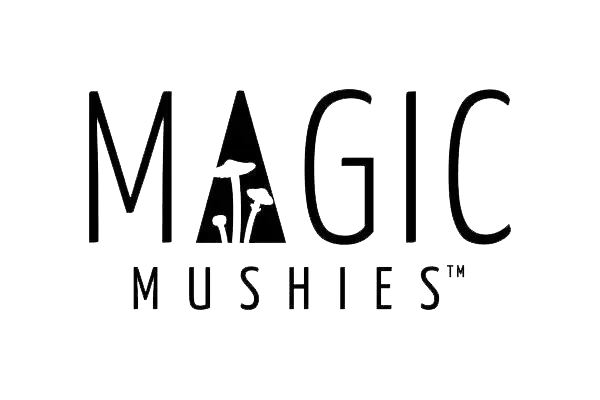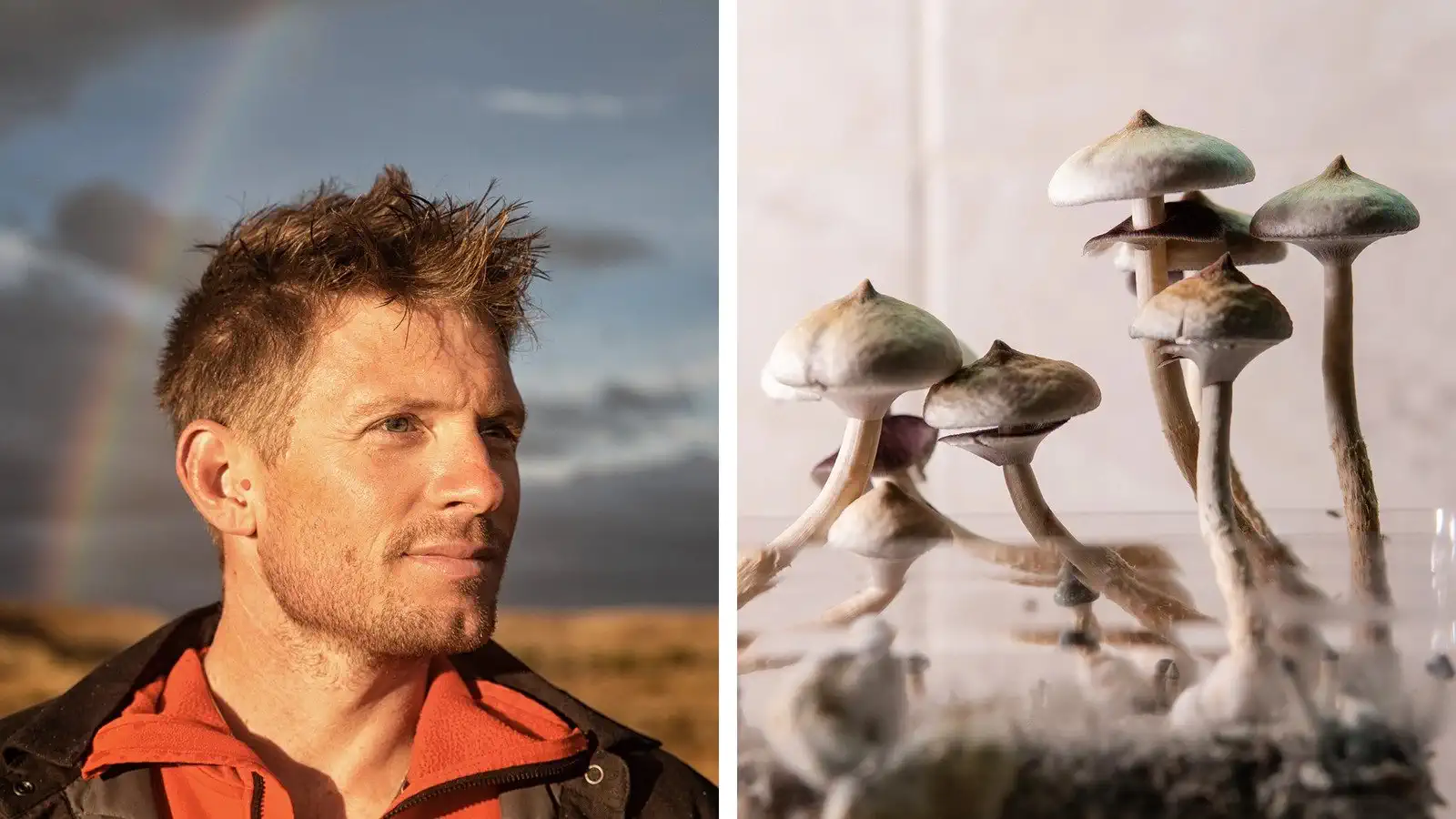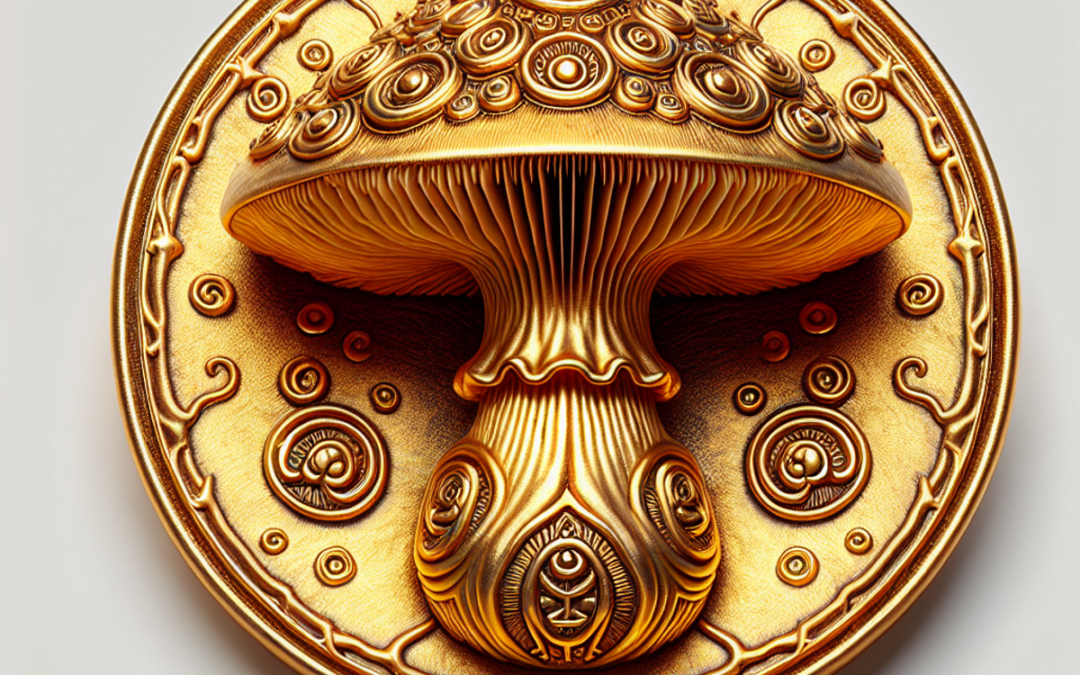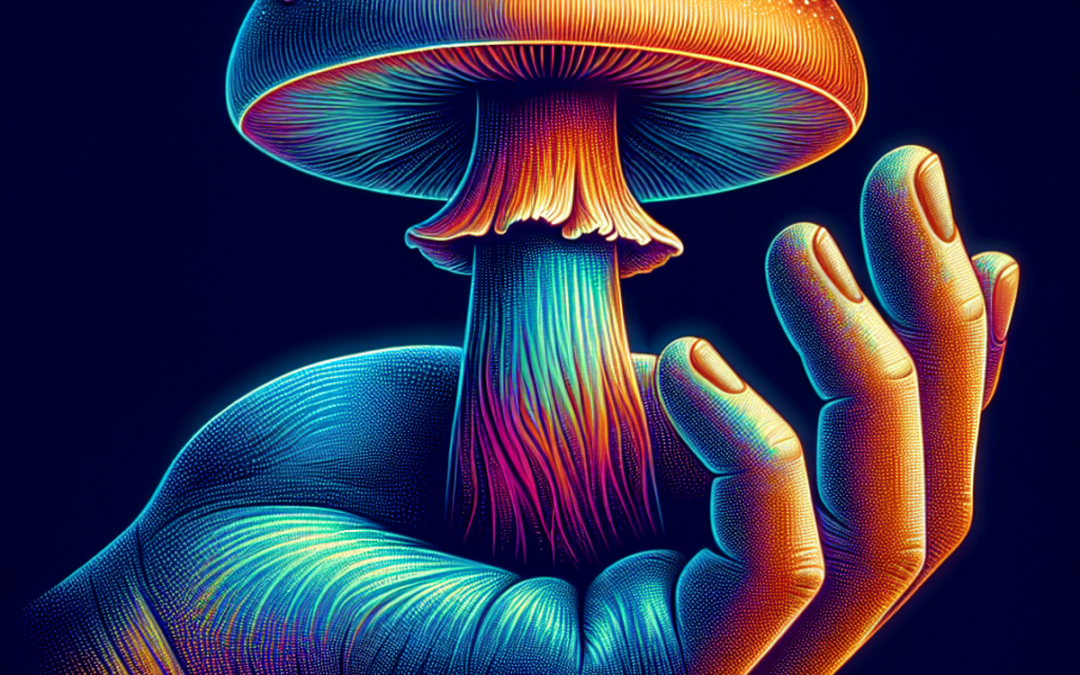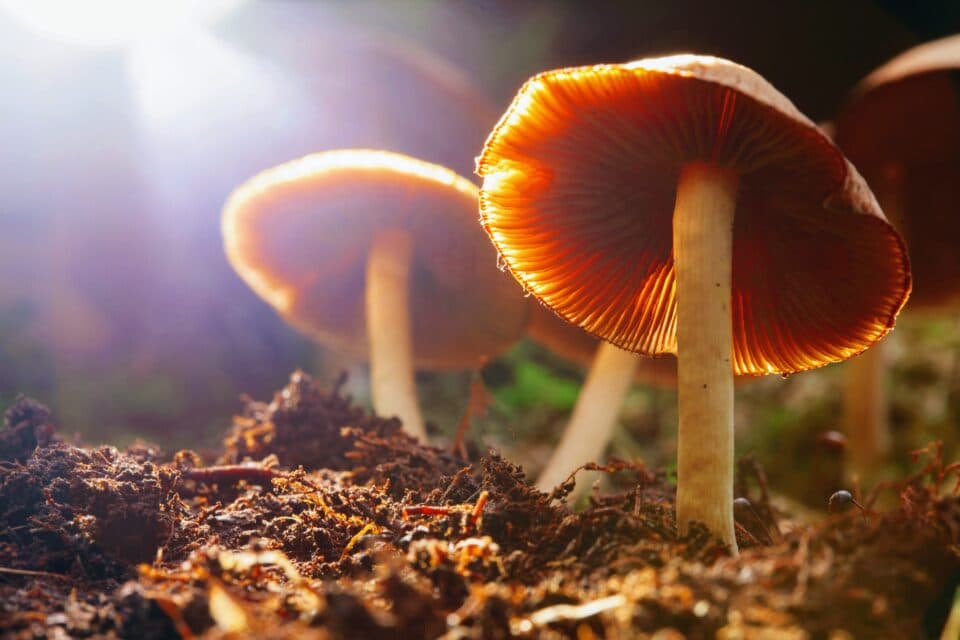Against all odds, Jim Harris was walking. It was exhausting, and he thought he looked like Frankenstein’s monster—stepping forward with his left leg, then throwing his unresponsive right leg around to meet it. But there he was, at a music festival, getting around with the assistance of a walker, eight months out from a spinal-cord injury that left him paralyzed from the chest down.
In November 2014, a snowkiting accident in Chile changed how the mountaineering instructor turned adventure photographer moved through the world. His days, once spent exploring the alpine, were now filled with rehabilitation exercises in a gym. So when a friend and former physical therapist invited him to the High Sierra Music Festival in Quincy, California, he jumped at the chance to feel like a regular 33-year-old again.
Yet as he settled in to listen to the show, in a grassy field surrounded by tall trees and gentle peaks, he didn’t feel regular. He couldn’t drink alcohol, because it seemed to weaken his remaining nerve connections, and although he’d decorated his walker with LED lights in an attempt at festivity, it didn’t really work. “The disability made me feel like an outsider,” he says. Then someone offered him magic mushrooms, which are packed with the psychoactive compound psilocybin, and he took them, thinking he might finally be able to have fun.
The String Cheese Incident, a Denver-based jam band, played that night, but Harris doesn’t remember the music. He remembers the pink and orange sunset, though, and the way that the clouds seemed to form a pattern of repeating shapes. He’d long had an appreciation for nature, but as a photographer for the likes of National Geographic, he’d also set the bar pretty high.
“There was a level of elitism for me. I wanted the pointiest and biggest peaks and the most dramatic sunsets,” he says. There, however, in the middle of the crowd, watching the setting sun peek through the trees, he realized nature didn’t have to be extreme to be profound.
Reveling in nature’s beauty is common for people on hallucinogens, but something surprising happened to Harris that night. He commandeered an acquaintance’s padded knee scooter so he could rest one leg at a time and still sway to the music. In the middle of a switch, he discovered that he could pick up his right foot and pull it back toward his butt. He tapped his right hamstring with a finger and the muscle contracted—a muscle that had been completely unresponsive since his injury, even in the low-gravity environment of a pool, despite eight months of physical therapy.
With wonder and some degree of hesitation, he showed his physical-therapist friend. They marveled together at what had been impossible for Harris earlier that day. He felt excited, but also confused. He’d been looking for a recreational experience, a way to feel normal and connect with other people. Instead, the trip was therapeutic: his mind and body communicated in a way that they hadn’t since his accident.
The next morning, Harris woke up afraid he’d imagined the whole thing, or that he’d lost his newfound ability while he slept, but his hamstring was still firing. The neuromuscular connection that had formed the night before wasn’t going anywhere.
Today, almost eight years after his injury, Harris has made a recovery that once seemed implausible. He still thinks he walks a bit like Frankenstein’s monster, but he gets around with just the help of a cane—and when the season is right, he skis or rides a mountain bike. Although it may sound far-fetched, Harris’s experience was not a fluke. In the past two decades, researchers have found overwhelming evidence that psychedelics are beneficial for mental health, and now they’re exploring the extent to which they can promote physical healing, too.
 Mountain biking has become a favorite activity for Harris, picture riding near his hometown of Carbondale, Colorado (Courtesy Jim Harris)
Mountain biking has become a favorite activity for Harris, picture riding near his hometown of Carbondale, Colorado (Courtesy Jim Harris)
Richard Nixon’s war on drugs brought psychedelic research to a standstill in 1970 with the Controlled Substances Act, but the field entered something of a renaissance in the early 2000s. One seminal study was led by Roland Griffiths, a psychopharmacologist and professor in the departments of psychiatry and neurosciences at Johns Hopkins University. In 1999, Griffiths began designing a study that would avoid the pitfalls of early psychedelic research, much of which failed to abide by the scientific method.
Take the oft-cited 1962 Good Friday experiment, for instance, in which a graduate student overseen by Timothy Leary brought 20 Harvard Divinity School students to a Good Friday service and gave half of them psilocybin and half of them niacin, a form of vitamin B3, to evaluate the effects of psilocybin on the human psyche. While those dosed with psilocybin did report profound experiences, there was a fatal flaw: the difference between the control and test groups became apparent as soon as the test group started tripping, so there was no effective control group.
Griffiths, on the other hand, created a legitimately double-blind study published in Psychopharmacology in 2006. He recruited 36 healthy volunteers who regularly participated in spiritual or religious activities to try and prove, in a controlled setting, psilocybin’s ability to induce meaningful, mystical experiences. Over the course of two or three eight-hour individual sessions, participants took either a dose of psilocybin or a stimulant known as Ritalin that is used to treat ADHD—and produced more of an effect than niacin. They were then given eyeshades and headphones playing classical music and directed to lie down on a couch, while study monitors stayed close by in case participants needed them. They were administered the other drug at their next session. At a 14-month follow-up, well over half of the participants reported that their psilocybin experience was “among the five most personally meaningful and among the five most spiritually significant experiences of their lives.” A single dose led to a sustained increase in well-being and life satisfaction. Griffiths’s positive results and rigorous study design helped garner support for additional research into psychedelics.
Since then, psychedelic research has gone mainstream: universities across the country are looking into possible applications for substance abuse, anxiety around terminal-cancer diagnoses, depression, and post-traumatic stress disorder, and it’s become a popular subject on the most mainstream of news outlets.
Before he had time to reconsider, the wind slammed him onto the ground, breaking nine vertebrae and paralyzing him in the middle of the chest at T7.
While early psychedelic studies primarily used LSD, researchers now favor psilocybin—which has similar effects but a different chemical makeup—because the name doesn’t carry the same stigma. MDMA, commonly known as molly or ecstasy, is also being heavily studied. Both are still illegal at the federal level, although public opinion and state laws are changing. Washington, D.C., and cities in Colorado, California, Massachusetts, Michigan, and Washington State have all decriminalized psilocybin, and Oregonians voted to decriminalize it statewide and legalize its use by specially licensed therapists in the 2020 general election.
When ingested, a dose of psilocybin—typically somewhere between 10 and 50 milligrams—results in what is often referred to as a “trip” that lasts about six hours. During this time, users experience changes in mood, thought, and perception as well as visual and auditory hallucinations. People often have mystical or spiritual experiences and feel connected to nature, humanity, and the universe. And while all of this is remarkable, how and why would it help an injured man walk?
Psilocybin is thought to be effective at promoting healing because it stimulates neuroplasticity, the brain’s ability to change and adapt through new neural connections, and neurogenesis, the formation of new neurons. “Psilocybin increases neurotransmitters in the brain, by making the healthy neurons more sensitive to circulating neurotransmitters such as serotonin,” Mark Wingertzahn, chief science officer for the psychedelic company Wesana Health, explains. “The changes in brain chemistry reverse atrophy and increase the neurons’ ability to rapidly repair damaged neurons, allowing them to begin their normal signaling process. Longer-term beneficial effects of psilocybin are believed to be related to regeneration of neurons and neuronal pathways that may have died.” This might explain what happened to Harris—the psilocybin reawakened the dormant neural pathway from his hamstring to his brain. After a week in a Chilean hospital, Harris was flown to a hospital in the United States (Courtesy Jim Harris)
After a week in a Chilean hospital, Harris was flown to a hospital in the United States (Courtesy Jim Harris)
On November 24, 2014 Harris was snowkiting through a field in Punta Arenas, Chile, alongside two friends, with a rainbow overhead. They were practicing with their kites before embarking on a 350-mile traverse across the Southern Patagonia Ice Field. When a gust of wind swept him off the ground and carried him across the field, Harris felt concerned, but calm. He was still so low that he had to pull his knees up to avoid catching an ankle on the uneven terrain. He considered trying to force his way back down, but he only had on sneakers, not skis, and worried about blowing out a knee. Then, before he had time to reconsider, the wind slammed him onto the ground, breaking nine vertebrae and paralyzing him in the middle of the chest.
Harris lay unmoving in a Chilean hospital for a week before he was flown to the University of Cincinnati Medical Center, near where he grew up. There, doctors made a 14-inch incision in his back, decompressed his vertebrae and fused five together. Within a few days, Harris could wiggle the index toe on his right foot—with a lot of effort. Three weeks later, he could engage his quad and lift his leg a couple of inches. In early January, he left his surgeon, who wanted to keep him immobile for several more months, for Craig Hospital in Denver, an institution devoted to spinal-cord and brain injuries, where doctors recommended he move as much as he could tolerate. The five months that he was treated at Craig were almost entirely filled with physical therapy and exercise. By the time he attended the music festival in July—seven months after his accident—he’d come a remarkably long way, from paralysis to getting around with just the help of a walker.
Still, Harris could not get his right hamstring to wake up. He’d spent hours focusing on that in particular, because in his mind, it was the one thing that kept him from walking normally. Sitting with his eyes closed, he’d tap the muscle and imagine activating it. He thought he could feel something, maybe, but it didn’t result in movement. To accomplish that, it turns out, he needed psilocybin.


Just one study has ever evaluated the connection between psychedelics and spinal-cord injury. In the early 2000s, researcher Victor Arvanian led a team at Stony Brook University that gave paralyzed rats a combination of LSD and neurotrophin-3, a protein that helps new neurons grow from stem cells. The rats dosed with both substances recovered at a much faster rate than control groups that received one substance alone or nothing at all. This was significant in the world of spinal-cord injury, where advancements are notoriously slow, but Arvanian’s department decided to stop using LSD in his experiments.
Now two different studies are evaluating psilocybin’s impact on individuals with traumatic brain injury (TBI): one group at the University of Miami and another from the Imperial College London, in collaboration with the nonprofit Heroic Hearts. In both cases, researchers are studying TBI that co-occurs with post-traumatic stress disorder, which has already been studied in relation to psychedelics—making these studies easier to get approved. While TBI results from physical trauma and PTSD refers to persistent psychological issues due to witnessing a traumatic event, they have overlapping physical and emotional symptoms like fatigue, irritability, and anxiety.
The studies’ methodologies are notably different. Michael Hoffer, principal investigator of the research being done at at the University of Miami, has designed a study around microdoses of psilocybin in combination with CBD (a cannabinoid derivative). At Heroic Hearts, Grace Blest-Hopley’s protocol involves two big trip-inducing doses over the course of a week. This difference is important because there is still so much scientists don’t know about how psilocybin works, including seemingly fundamental things like dosing. “Is a microdose just a step along the ladder to a psychedelic effect, or does a microdose have one effect and a psychedelic dose have another effect?” Hoffer asks. “No one knows.”
People often have mystical or spiritual experiences and feel connected to nature, humanity, and the universe. All of which is remarkable, but how and why would it help an injured man walk?
New studies show that psychedelics may be anti-inflammatory without the negative side effects of other anti-inflammatory drugs. Because the chronic inflammation associated with head trauma is a known barrier to healing, the ability of psilocybin to both reduce inflammation and promote the healing itself is potentially groundbreaking. “It produces an effect that allows healing to happen organically,” Hoffer says.
The TBI studies are relevant to spinal-cord injury because the two injuries are remarkably similar. Researchers can leverage the data collected on TBI and psychedelics to convince researchers to seek funding for studies on the spine. But Evan Lewis, a neurologist and vice president of neurology at Numinus, a Canadian psychedelic research company, told me they shouldn’t have to. “The cells in the brain are the same cells in the spinal cord,” he says.
In general, the physical and psychological worlds are not as separate as we like to think, Stanford professor of psychiatry and behavioral sciences Nolan Williams told me. “If I have a stroke in the circuitry that is involved in emotional regulation, I’m going to have depression. If I have a stroke in the system that is involved in motor regulation, I’m going to have paralysis,” he explains. “But in both cases, it’s a physical aberration. The idea is that psychedelics seem to affect the nature of the way the circuits work, both in emotional mood regulation circuits as well as motor circuits.”
 Harris, an artist and printmaker, at work in his studio (Courtesy Jim Harris)
Harris, an artist and printmaker, at work in his studio (Courtesy Jim Harris)
After surgery, Harris, like most spinal-cord-injury patients, had a recovery protocol primarily consisting of physical therapy. It’s currently the best treatment doctors have. Evan Lewis told me that physical therapy has more in common with psychedelics than one might expect. “They are the same,” he says: physical therapy uses repetitive movements to rebuild damaged neural pathways and create new ones, which can increase neuroplasticity and neurogenesis, just like psychedelics.
While psychedelics may help facilitate physical healing, the substances are not free of complications. High doses can lead to muscle spasms for people with spinal-cord injuries. According to Lewis, it’s a well-known issue, although no formal study has evaluated it.
For some, the spasms last so long and are so painful and disorienting that it can be psychologically harmful; for others, they are manageable. Jesi Stracham, a 29-year-old orthodontic assistant based in Iron Station, North Carolina, was paralyzed from the waist down in a motorcycle accident in 2015. Her spasms are so intense when she takes psilocybin that her legs seem to run in her chair. But, she told me, the loss of bladder control and the surreal image of her legs moving on their own is not enough to keep her from using psilocybin a few times a year. She hasn’t seen marked improvement in her physical symptoms, but the mental health benefits make it worth the discomfort.
During his psychedelic experiences, Harris likes to imagine that the spasming is the brain remapping cut-off areas, an idea that seems to fit with his experience. Lewis, however, explains that remapping is wishful thinking, since spasms happen on a local nerve and spinal-cord level. When your doctor tests your reflexes by hitting just below the knee and your leg kicks out, he says, the only role the brain plays is to tell the leg to relax back down again. “Spasms are increased reflexes, because we’ve lost the influence of the brain,” he says.
Yet consider the work coming out of the University of Minnesota’s E-STAND trial, where researchers surgically implant an electrically stimulating device at the point of paralysis, creating a localized spasm. Some patients, even those whose accidents occurred years ago, are able to kick their leg out on command as soon as the day after implantation. And some patients who receive regular stimulation for six months are able to move their legs even when the device is turned off. This won’t lead to walking, explained David Darrow, the principal investigator, because the patients still lack sensation. But something remarkable is happening. “It’s still coarse—they still can’t feel—but we’re starting to see a longer-term neuroplastic effect,” he says.
Darrow thinks the electric stimulation strengthens the few remaining pathways in the damaged spinal cord. This brings reflex circuitry back into conversation with the brain—which could be interpreted as remapping cut-off areas.
 Catching last light on Colorado trails (Courtesy Jim Harris)
Catching last light on Colorado trails (Courtesy Jim Harris)
Harris isn’t the only one experimenting on himself while waiting for public research to catch up. After former National Hockey League player Daniel Carcillo found relief from brain damage with psilocybin in 2019, he started Wesana Health, a psychedelic company that he hopes will help bring psilocybin to other people.
Over the course of a ten-year professional hockey career (with two Stanley Cup wins), Carcillo sustained seven confirmed concussions. In 2012, he began to experience symptoms of severe traumatic brain injury, including slurred speech, light sensitivity, depression, and a desire to isolate. When his wife gave birth to their first child that same year and Carcillo was consumed by suicidal thoughts, he knew something had to change. Brain scans showed severely damaged areas. The then 27-year-old’s testosterone levels were shockingly low, hovering closer to amounts typical for a 72-year-old, and his cortisol levels were three times higher than usual for his age. He tried every treatment he could find, but nothing helped.
Then, in 2019, a former teammate invited him to a psilocybin ceremony on a biochemist’s farm. (Carcillo won’t divulge any more information about the location or the biochemist.) He took a large dose—5.6 grams—and had an emotionally transformational trip where he faced his relationship with his health.
The trip’s aftermath was astonishing: he could go outside without sunglasses, talk without slurring his speech, and wanted to immediately be reunited with his family. But, he says, “I knew enough to know that nothing gets fixed in five hours. There has to be a sustained protocol.” So he worked with the biochemist to create a regimen of CBD and high- and low-dose psilocybin.
In general, the physical and psychological worlds are not as separate as we like to think.
Six months later, his regularly scheduled scan showed Carcillo what he already knew to be true: his brain scans and cortisol levels were back to normal. He’s followed this program ever since, deviating only to experiment with frequency of big psychedelic trips and the microdosing and CBD schedule in between. In 2020, he started Wesana Health.
Unsurprisingly, psychedelic companies are sprouting like weeds. George Greer, head of the Heffter Institute, which is responsible for funding much of today’s psilocybin research, told me that this world of development for venture capital is sort of like the Wild West. Some of the most prominent organizations working to support therapeutic psychedelic use, like the Multidisciplinary Association for Psychedelic Studies and the Usona Institute, are nonprofits, but plenty of entrepreneurs are interested in turning a profit with psychedelics. Greer thinks that trying to make money from psychedelics is impractical, because the patents for drugs like MDMA are now in the public domain and natural substances like psilocybin cannot be patented.
But that doesn’t keep people like Carcillo from trying to patent novel compounds and modes of production or change existing compounds. With Wesana Health, he aims to introduce the same regimen that helped him—the specifics of which he’s secretive about—to others. The company has completed an experiment on animals and has a meeting set with the FDA. Carcillo is sensitive about the for-profit aspect of his company, explaining that he sees it as the best way to bring these drugs to people as quickly as possible.
The laws passed in the next few years will greatly shape how people access psychedelics. Harris recently joined a team advocating for full legalization in Aspen, Colorado, about 30 miles from his home in Carbondale. A Colorado ballot initiative in the November midterms—Proposition 122, or the Natural Health Medicine Act—would decriminalize personal use and possession of certain psychedelic plants and fungi and provide a legal pathway for clinicians to use them. This would allow people to use these substances recreationally and medically.
 Harris’s work regularly features mountains and sky (Courtesy Jim Harris)
Harris’s work regularly features mountains and sky (Courtesy Jim Harris)
Before his injury, Harris was no psycho-naut. He’d done psilocybin a few times with friends, but Tom Wolfe’s account of Ken Kesey and the Merry Pranksters’ psychedelic antics in The Electric Kool-Aid Acid Test had scared him away from LSD. He associated MDMA with Midwest rave-party culture. “I witnessed that take a real toll on people, so I kept those substances at arm’s length for a long time,” he says. “My accident precipitated this greater interest in, and openness toward, psychedelics.”
For a while after the music festival, Harris focused his interest in psychedelics on physical healing. “I was able to kick the can of depression down the road for a couple of years, which probably aided my recovery, because it seems like a lot of spine-injury patients are quickly pulled into clinical-level depression,” he told me. “For whatever reason, I had some sense of purpose in my recovery, and it enabled me to spend a huge amount of time and effort and motivation to keep working really hard in physical therapy.”
But in mid-2017, the depression came for him. His girlfriend dumped him, his dog died, he got laid off from his job at the 5Point Film Festival, and he passed his two-year injury anniversary—the point when, most experts agree, recovery plateaus. Then, twice in one day, separate friends recommended he try ayahuasca, a South American brewed mixture originally used by Indigenous communities for ceremonial purposes. It contains a naturally occurring version of the first antidepressants developed, MAOIs (monoamine oxidase inhibitors), and the psychedelic DMT (dimethyltryptamine).
Unlike other psychedelics, few people think of ayahuasca as recreational or fun. It’s more often talked about as difficult, important, and profound. It was exactly the emotional experience Harris needed. He’d tried antidepressants, but found they didn’t help. “They didn’t seem like a great fix to the underlying issues. Psychedelics, being in community, and thinking, reflecting, and talking about things seem much more helpful to me,” he says.
Since then, Harris has settled into a rough schedule of two high-dose trips a year, and two to four moderate-dose trips a year, which he believes support both his emotional and physical healing. For him, moderate doses—enough to heighten perception but not lay him out—enhance his mind-body connection so that he can go for a bike ride, focus on his muscles, and make micro-adjustments that further his physical therapy.
In Carbondale, Harris spends his time making woodblock art, coaching at Ripple Effect Training, doing freelance communication work for a few small clients, and getting outside with the people he loves. He wants to keep growing into a better version of himself, more connected to other people and his own body.
He’s always been vocal about his recovery. Since his hospital stay in Chile, he’s self-documented and allowed others to document his progress. But he only recently began sharing the psychedelic side of his recovery and his life. As psychedelics go more mainstream and research on it is legitimized, he feels it’s important to throw his experience into the mix, to advocate for a future he believes in.
Until the University of Miami and Imperial College London publish the results of their studies, the best evidence we have is the stories of people like Harris and Carcillo, who both experienced injuries that resulted in interwoven physical and emotional damage. Psilocybin helped heal both their minds and bodies, which in turn allowed them to invest more deeply in their daily recovery. Their psychedelic journeys are something to return to and build on again and again. As Harris says: “Psychedelics both are the way and merely point to the way.”
Source: Jim Harris Was Paralyzed. Then He Ate Magic Mushrooms.
